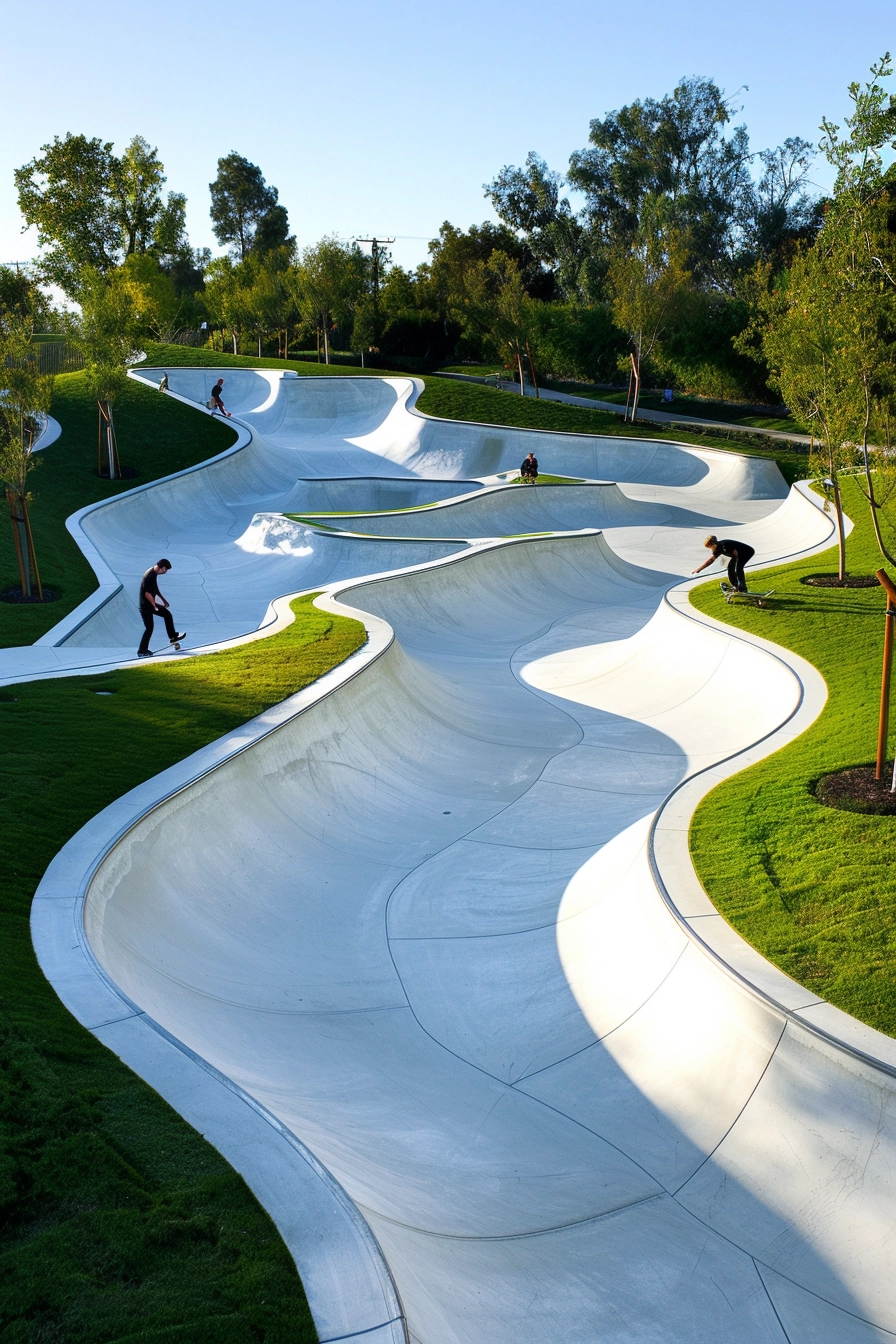Building a backyard skatepark is a dream come true for skaters who want to practice and refine their skills at home. Whether you’re into skateboarding, roller skating, in-line skating, or BMX cycling, creating your own skatepark allows you to have the ideal setup for your favorite hobby.
Experts recommend starting with a 2.0-2.5-foot-tall quarterpipe for beginners, as it helps establish balance and learn new tricks like dropping in. Additionally, when designing obstacles for your backyard skatepark, it’s important to consider your personal preferences and what brings you joy. You can gather inspiration by watching skatepark videos and visiting local skateparks to determine which obstacles you enjoy the most.
Some popular DIY projects for a backyard skatepark include transforming an outdoor swimming pool into a skate bowl, building a mini ramp or skate rail, and constructing a grind box. It’s crucial to follow proper building techniques and safety measures when creating your own skatepark, and consider factors like ramp dimensions, transition angles, and surface materials to ensure the best skating experience in your backyard.
Key Takeaways:
- Building a backyard skatepark provides a personalized setup for skaters to practice and enjoy their favorite activities at home.
- Start with beginner-friendly features like a 2.0-2.5-foot-tall quarterpipe to establish balance and learn new tricks.
- Get inspired by watching skatepark videos and visiting local skateparks to determine your preferred obstacles.
- Consider popular DIY projects such as transforming an outdoor pool, building a mini ramp or skate rail, and constructing a grind box.
- Follow proper building techniques and safety measures, considering factors like ramp dimensions and surface materials for the best skating experience.
Planning Your Backyard Skatepark Layout and Features
To begin planning your backyard skatepark, there are several important factors to consider. First, evaluate the available space in your backyard and determine how much room you have to work with. Additionally, assess your budget and decide how much you can invest in the construction of your skatepark. It’s also crucial to check local regulations and permitting requirements to ensure that your project complies with any necessary regulations.
Another important consideration is the climate in your area, as it will determine whether your skatepark can be used year-round or if you need to make provisions for winter storage. Finally, think about the skill level and dedication of the skaters who will be using the skatepark. For beginners or casual skaters, starting with smaller, simpler features is recommended, while more experienced skaters may prefer a more challenging and extensive setup.
Once you have determined these factors, you can begin designing your backyard skatepark layout. Consider the flow of the park, ensuring that there is enough space between features for skaters to maneuver and pick up speed. Incorporate a mix of street-style and transition-style elements to cater to different skaters’ preferences. Plan the placement of ramps, quarterpipes, rails, stairs, and other components to create a cohesive and enjoyable skatepark experience in your backyard.

Key Considerations for Skatepark Design and Functionality
When designing a skatepark, it’s crucial to prioritize both usability and functionality of the space. Usability refers to how skaters interact with the park, encompassing elements such as flow, traffic, speed, difficulty, and visibility within the skating area. Functionality, on the other hand, focuses on the broader public and skaters when they’re not actively skating, including capacity, seating areas, access, visibility into and around the park, safety, drainage, aesthetics, landscaping, and spatial and budgetary constraints.
A well-designed skatepark strikes a balance between usability and functionality, catering to the needs of skaters while also offering an attractive and enjoyable space for the community. Identifying flaws and addressing them during the design process is crucial to creating a successful and enjoyable skatepark experience. Incorporating a mix of street and transition elements, ensuring a smooth flow between features, and providing ample space to accommodate multiple skaters at once are common considerations in skatepark design.
Collaboration with skatepark advocates and designers is essential in creating a skatepark that not only meets the needs of skaters but also enhances the overall recreational experience for the community. By considering important factors such as skatepark building materials, design functionality, usability, and overall functionality, you can create a skatepark that becomes a beloved and thriving part of your community. Remember, a well-designed skatepark isn’t just a place to skate but an opportunity to foster connections, promote health and wellness, and inspire a passion for the sport.


